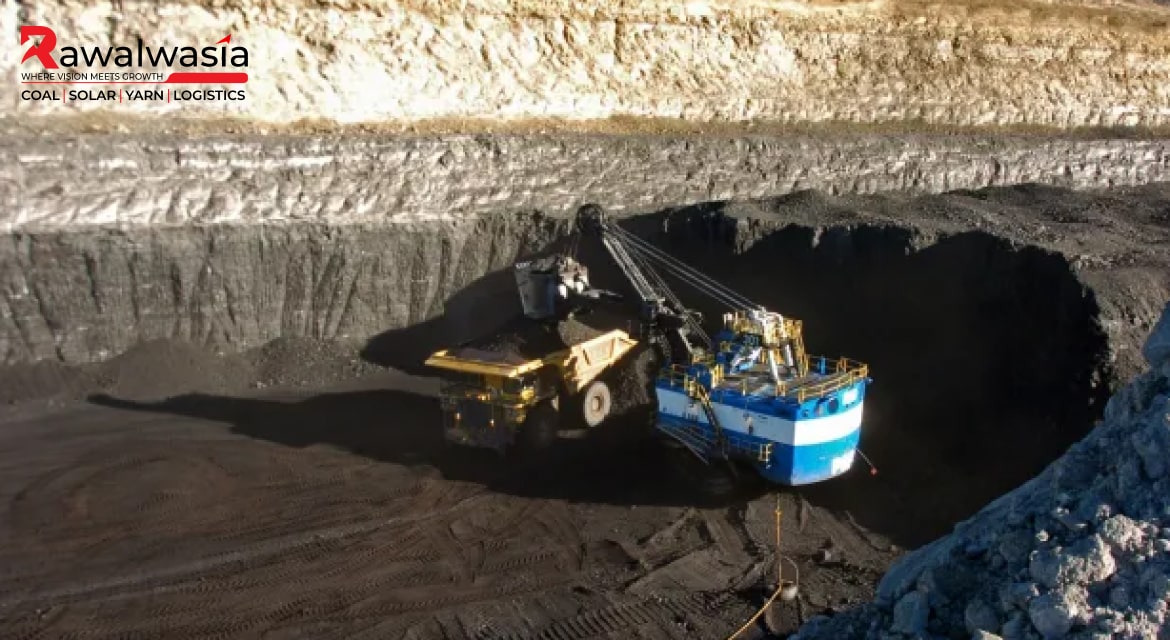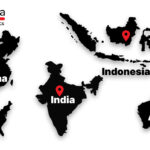Introduction
Coal mining is the backbone of India’s energy industry, supplying nearly 70% of the nation’s power needs. It is crucial as India is one of the world’s largest coal producers, with several regions rich in this essential fossil fuel. Coal mining is also central to the work of the Rawalwasia Group, a company at the forefront of sustainable coal supply, working to innovate the future of India’s energy sector.
This blog focuses on coal mining. It explores the “Top 10 Coal-Producing Places in India” and highlights their coalfields, types of coal, key features, and role in fueling the nation.
1. Jharkhand

- Major Coalfields: Jharia, Bokaro, North Karanpura, Giridih
- Type of Coal: Bituminous and Anthracite
- Features: Jharkhand is home to the largest coal reserves in India, especially the Jharia coalfield, known for its high-quality bituminous coal. It also has a significant amount of coking coal used in steel production.
- Production Rate: Jharkhand produces approximately 113 million tonnes of coal annually, and its growth rate is steady due to increased mining and industrial demand.
- Mainly Used For: Power generation, steel manufacturing.
2. Odisha
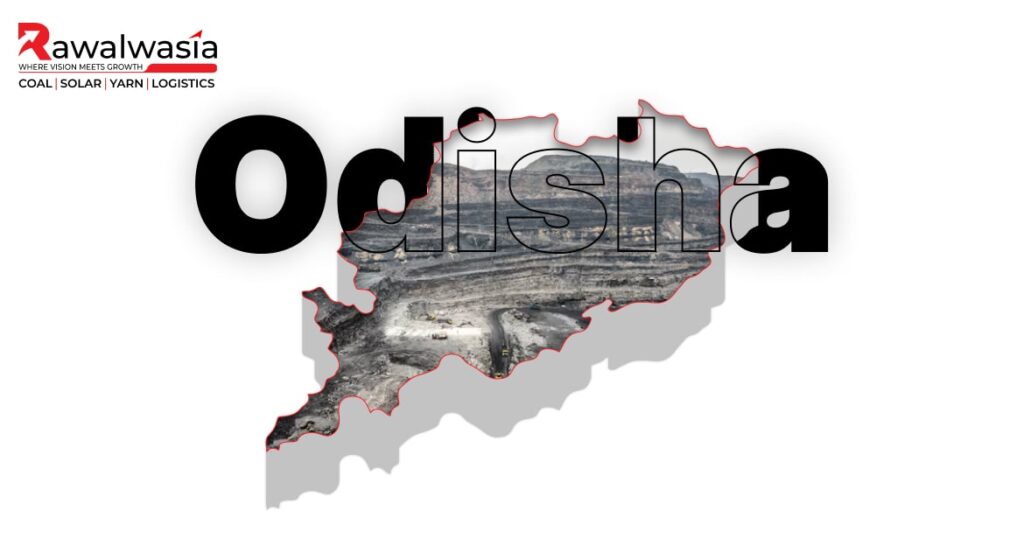
- Major Coalfields: Talcher, Ib Valley
- Type of Coal: Bituminous and Lignite
- Features: Odisha is one of the largest coal-producing states, thanks to the Talcher Coalfield, which has some of the thickest coal seams in India. The state plays a crucial role in fueling power plants across the country.
- Production Rate: Odisha contributes around 143 million tonnes annually, showing a robust growth rate due to increased industrial activity.
- Mainly Used For: Electricity generation, cement production.
3. Chhattisgarh

- Major Coalfields: Korba, Hasdeo-Arand, Mand-Raigarh
- Type of Coal: Bituminous
- Features: Chhattisgarh’s Korba coalfield is one of India’s biggest open-cast mines, and the state is known for its consistent production of high-grade coal. It also hosts several state-run coal mining companies.
- Production Rate: Produces approximately 142 million tonnes annually, making it the second-largest coal-producing state.
- Mainly Used For: Power plants, industrial heating
4. West Bengal

- Major Coalfields: Raniganj
- Type of Coal: Bituminous
- Features: The Raniganj coalfield, one of the oldest in India, still produces a significant amount of high-quality coal. West Bengal plays a historical role in India’s coal industry.
- Production Rate: West Bengal produces around 30 million tonnes of coal annually.
- Mainly Used For: Power generation, iron and steel production
5. Madhya Pradesh
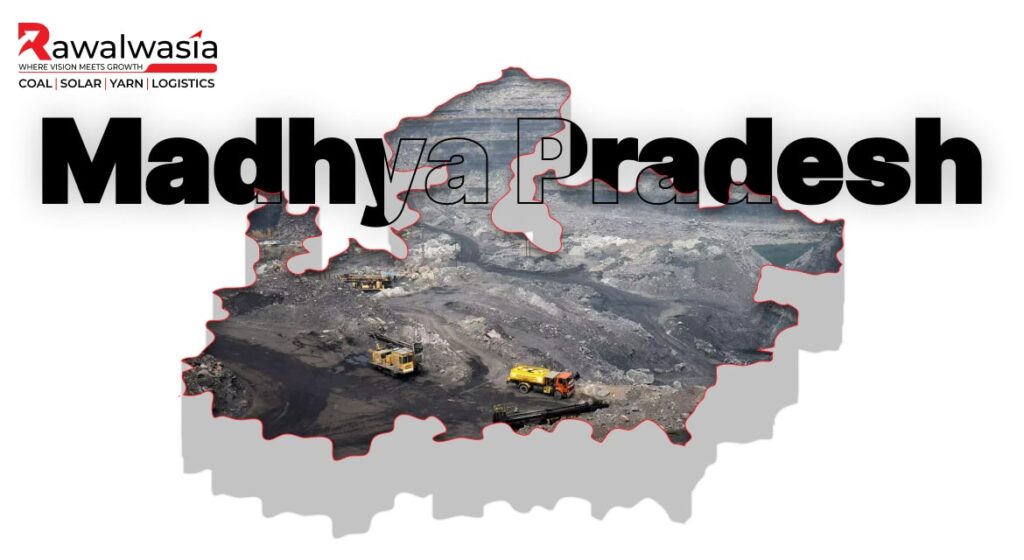
- Major Coalfields: Singrauli, Sohagpur
- Type of Coal: Bituminous
- Features: Madhya Pradesh is a key player in India’s coal production, with the Singrauli coalfield spanning across both Madhya Pradesh and Uttar Pradesh. The state is essential for power generation and industrial coal supply.
- Production Rate: Contributes around 72 million tonnes annually, substantially growing recently.
- Mainly Used For: Thermal power plants
6. Telangana
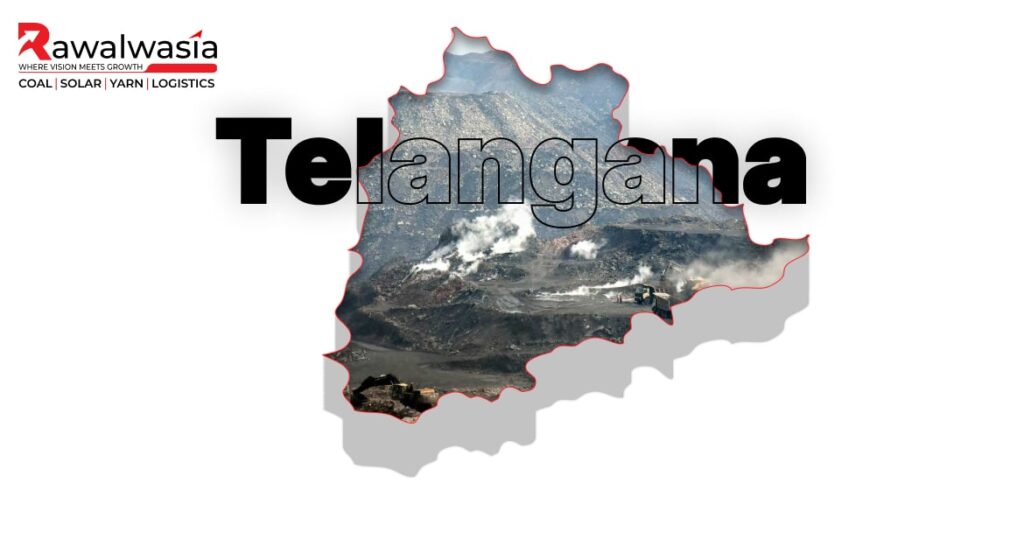
- Major Coalfields: Singareni
- Type of Coal: Bituminous
- Features: The Singareni coalfield is managed by Singareni Collieries Company Limited (SCCL), a joint venture between the Government of Telangana and the Government of India. Telangana’s coal is highly sought after for its heating value.
- Production Rate: Produces around 64 million tonnes annually.
- Mainly Used For: Power generation, heavy industry
7. Maharashtra
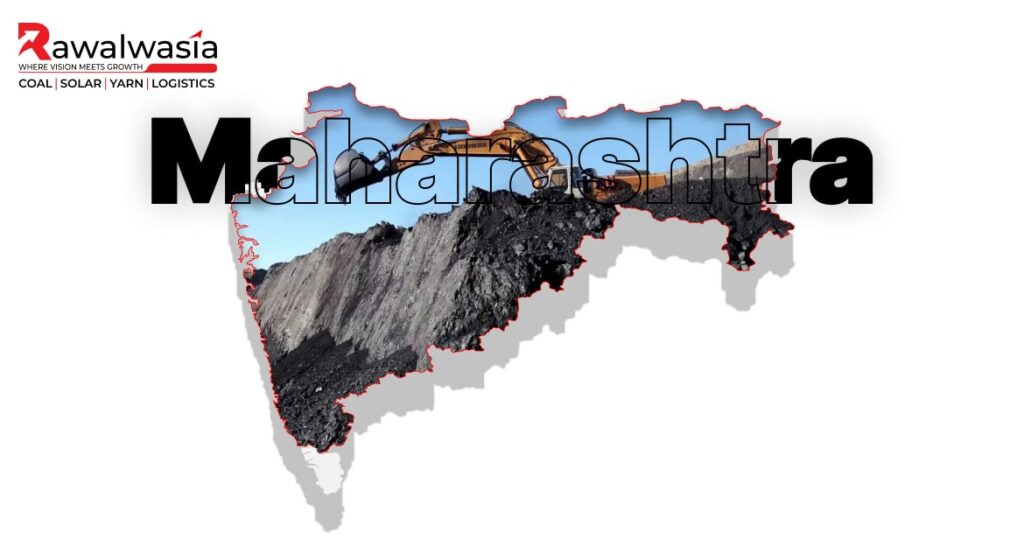
- Major Coalfields: Wardha Valley, Kamptee, Chandrapur
- Type of Coal: Bituminous
- Features: Maharashtra’s coalfields are primarily open-cast mines with a significant production rate. The Wardha Valley is known for its extensive coal reserves, supplying power plants across the state.
- Production Rate: Produces around 45 million tonnes of coal annually.
- Mainly Used For: Electricity generation
8. Andhra Pradesh

- Major Coalfields: Godavari Valley
- Type of Coal: Bituminous
- Features: The Godavari Valley Coalfield is a prominent source of coal in southern India. It has supplied coal to various industries, including power generation and cement manufacturing.
- Production Rate: Produces around 40 million tonnes annually.
- Mainly Used For: Cement plants, power stations
9. Uttar Pradesh
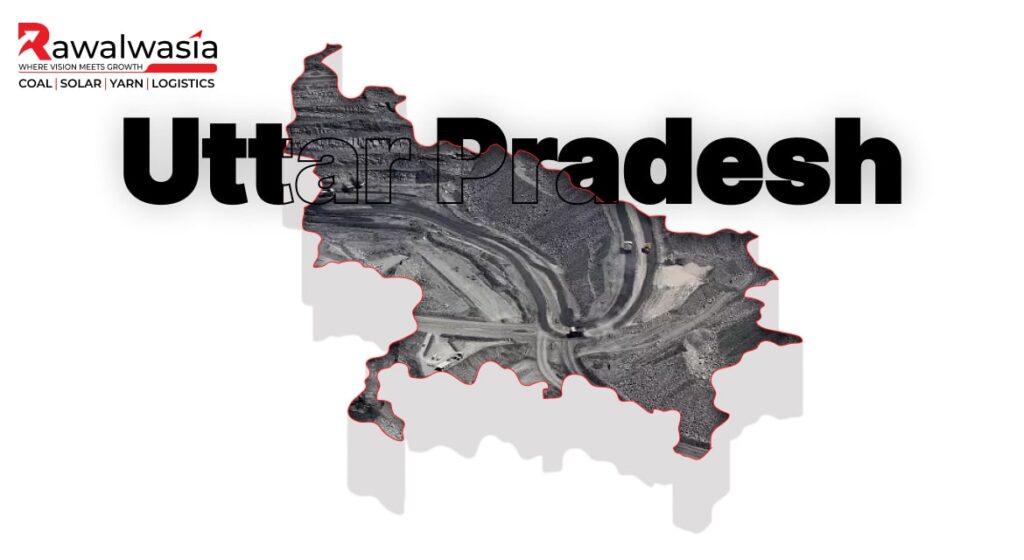
- Major Coalfields: Singrauli (shared with Madhya Pradesh)
- Type of Coal: Bituminous
- Features: Uttar Pradesh shares the Singrauli coalfield with Madhya Pradesh, contributing to India’s power sector.
- Production Rate: Contributes around 25 million tonnes annually.
- Mainly Used For: Thermal power plants
10. Assam

- Major Coalfields: Makum, Dilli-Jaipore
- Type of Coal: Lignite
- Features: Although Assam’s coal is less significant in volume than the other states, its Makum coalfield is vital for local industries and contributes to the region’s power supply.
- Production Rate: Produces around 2 million tonnes annually.
- Mainly Used For Local power generation
Coal Grades in India
State | Majoy Coalfield(s) | Grader |
| Jharkhand | Jharia, Bokaro | A, B, C |
| Odisha | Talcher, Ib Valley | A, B, C |
| Chhattisgarh | Korba, Hasdeo-Arand | A, B, C |
| West Bengal | Raniganj | B, C, D |
| Madhya Pradesh | Singrauli, Sohagpur | A, B, C |
| Telangana | Singareni | A, B, C |
| Maharashtra | Wardha Valley, Chandrapur | B, C |
| Andhra Pradesh | Godavari Valley | B, C |
| Uttar Pradesh | Singrauli (shared) | B, C |
| Assam | Makum, Dilli-Jaipore | C, D |
The Rawalwasia Group and Its Contribution to Coal Innovations
Rawalwasia Group continues to lead the charge as India’s coal industry grows by innovating and modernizing coal mining and supply methods. With sustainability at the core of its operations, Rawalwasia strives to introduce more efficient coal production practices, aiming to minimise environmental impact while maximising output and quality.
Their efforts in embracing future-forward technologies help ensure India can meet its growing energy demands more cleanly and efficiently. Whether through investments in advanced mining equipment, cleaner extraction processes, or supply chain optimisations, Rawalwasia is a vital player in shaping the future of India’s coal industry.
Conclusion: Future of Coal Energy in India
As we look toward the future, coal remains a critical part of India’s energy landscape. While the transition to renewable energy is underway, coal will continue to play a significant role in supporting the country’s economic growth. Companies like the Rawalwasia Group are essential in driving innovation within the coal sector, ensuring that production remains efficient, sustainable, and responsive to the nation’s needs.
With continued technological advancements and a focus on sustainable practices, India’s coal industry is set to remain a powerful force in the global energy market for years to come.


